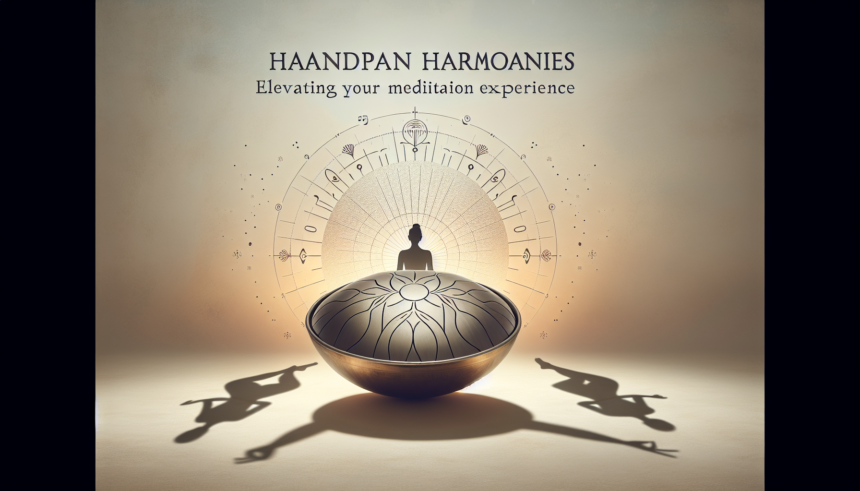The serene and ethereal sound of the handpan has captivated hearts and minds worldwide, serving as more than just a musical instrument but as a powerful tool for meditation and mindfulness. For those who seek an immersive, calming experience that elevates their meditation, the handpan presents a unique and compelling option. In this article, we will delve into the handpan’s origins, its role in meditation, and how to incorporate its harmonious tones into your mindfulness practice.
The Origins of the Handpan
The handpan is a relatively modern instrument, invented in the early 21st century. It traces its roots to the Swiss town of Bern, where Felix Rohner and Sabina Schärer developed the first handpan, known then as the “Hang,” in 2000. Inspired by the steelpan from Trinidad and Tobago, gongs, and other percussion instruments, the Hang soon garnered global attention for its mesmerizing, otherworldly sound.
The instrument’s distinct shape—resembling a flying saucer—consists of two half-shells of nitrided steel, bonded together to create a resonant cavity. The top shell is hammered into a series of dome-shaped tone fields, each tuned to a specific musical note. Striking these tone fields with the hands produces the handpan’s characteristic harmonic richness and sustain.
The Handpan and Meditation
Meditation, a practice that has been around for millennia, aims to foster mindfulness, inner peace, and overall well-being. Incorporating sound into meditation is not a new concept; Tibetan singing bowls, gongs, and chanting have been used for centuries to deepen meditation experiences. The handpan, with its soothing timbre and sustained resonance, offers a contemporary twist on this ancient practice.
Benefits of Using the Handpan in Meditation
1. Deepens Relaxation: The handpan’s sound can transport listeners to a state of deep relaxation, helping to quiet the mind and reduce stress.
2. Enhances Focus: The instrument’s melodic patterns can serve as a focal point, guiding meditative practice and aiding in concentration.
3. Emotional Healing: The harmonic overtones produced by the handpan can evoke a range of emotions, providing a path to emotional release and healing.
4. Grounding Effect: The tactile act of playing the handpan anchors the practitioner in the present moment, fostering mindfulness and presence.
How to Incorporate Handpan Music into Your Meditation Practice
Integrating the handpan into your meditation routine can be a seamless process, whether you are a seasoned practitioner or a novice. Here are some steps to get you started:
1. Select the Right Handpan
Handpans come in various scales and tunings, each offering a unique emotional palette. It’s important to choose a handpan that resonates with you personally. Spend time listening to different scales and tunings to find one that aligns with your meditation goals.
2. Create a Serene Space
Set up a quiet, comfortable space for your meditation practice. Dim the lights, light some candles, or use essential oils to create a tranquil atmosphere. Comfort is key, so ensure you have cushions or a comfortable seat.
3. Establish a Routine
Consistency is crucial in meditation. Allocate specific times for your practice, whether in the morning to start your day or in the evening to wind down. Integrating the handpan can become a cherished part of your routine, signaling your mind and body that it’s time to relax and focus.
4. Start with Breathing Exercises
Begin your session with deep breathing exercises to center yourself. Inhale deeply through your nose, allowing your abdomen to rise, then exhale slowly through your mouth. Repeat this several times to ground yourself and prepare for the meditative journey with the handpan.
5. Play or Listen to the Handpan
If you are a handpan player, start with simple, slow rhythms. Focus on connecting with the instrument, allowing its vibrations to resonate within you. If you do not play the handpan, consider listening to handpan music specifically composed for meditation. Many artists offer recordings that are ideal for meditative practices.
6. Reflect and Journal
After your session, take a few moments to reflect on the experience. Consider journaling your thoughts and feelings. This practice can provide insights into how the handpan is influencing your meditation and overall well-being.
Conclusion
Incorporating the handpan into your meditation practice can profoundly enhance your experience. The instrument’s unique sound qualities promote deep relaxation, heightened focus, and emotional healing, making it a powerful ally in your journey towards mindfulness. By selecting the right handpan, creating a serene space, and establishing a routine, you can harness the handpan’s harmonies to elevate your meditative practice. Whether you are playing the instrument yourself or listening to expertly crafted handpan music, the serene and enchanting sounds of the handpan can usher you into a state of tranquility and introspection like never before.
FAQs
1. What is a handpan?
The handpan is a steel percussion instrument consisting of two half-shells bonded together to create a resonant cavity. It has a series of tone fields hammered into the top shell, each tuned to a specific note, producing harmonic, melodic, and percussive sounds when struck.
2. How does the handpan enhance meditation?
The handpan enhances meditation by providing a soothing, harmonious sound that fosters deep relaxation, improves focus, facilitates emotional healing, and grounds the practitioner. Its unique timbre and sustained resonance make it an effective tool for mindfulness practices.
3. Do I need to play the handpan to benefit from its sounds in meditation?
No, you do not need to play the handpan to benefit from its sounds during meditation. Many artists and musicians offer handpan music specifically composed for meditation, which you can listen to during your practice. Simply find recordings that resonate with you and incorporate them into your routine.
4. How do I choose the right handpan for meditation?
Choosing the right handpan involves listening to various scales and tunings to find one that resonates with you emotionally and spiritually. Each handpan offers a different emotional palette, so take the time to explore different options and select one that aligns with your meditation goals.
5. Can handpan music be combined with other meditation practices?
Yes, handpan music can be seamlessly integrated with other meditation practices, such as deep breathing exercises, guided meditations, yoga, and sound baths. Its harmonies complement and enhance various mindfulness techniques, providing a multidimensional meditative experience.





